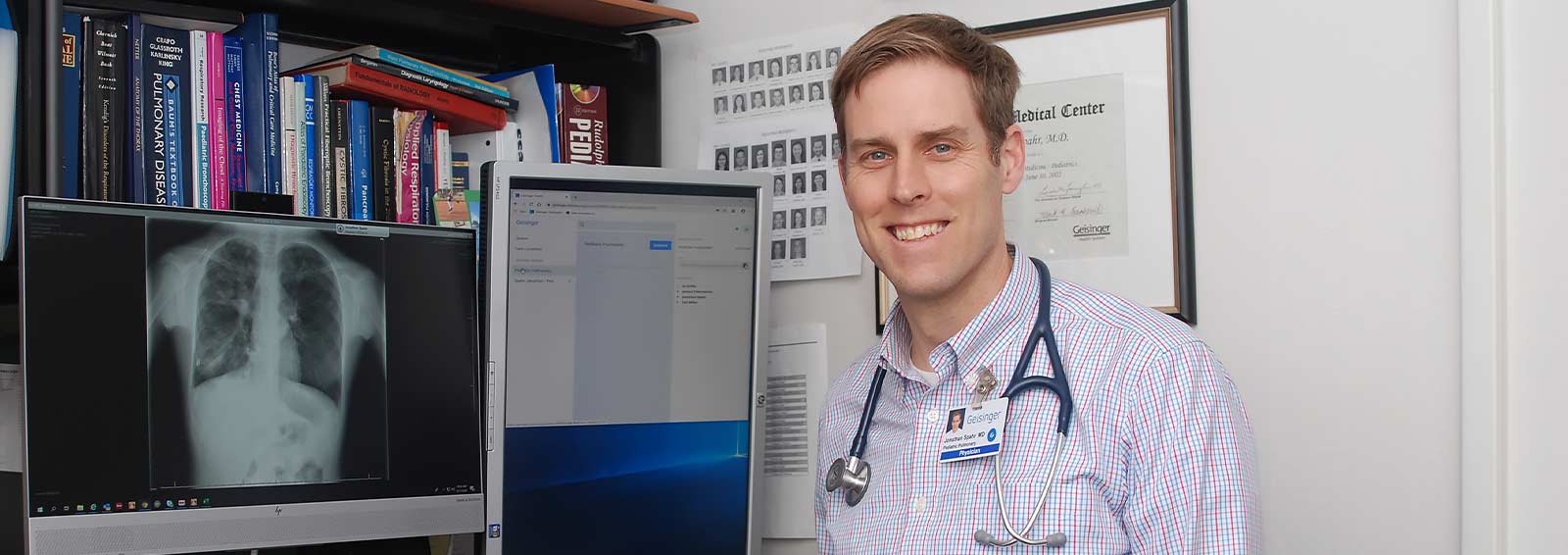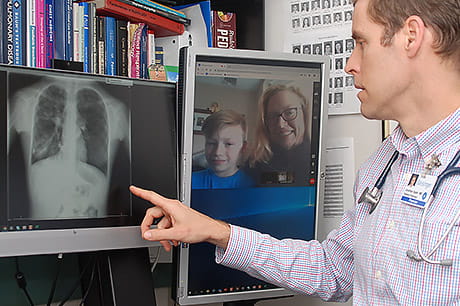Today’s House Call: Seeing Your Doctor from Home
Video visits let you see your doctor from the comfort of your own home.
by Paula Franken
The need for physical distancing in the past few months made video healthcare a necessity. Thanks to telemedicine, care was just a chat away — no need to cancel appointments. The trend gained popularity as a response to COVID-19, but will be around long after the pandemic is behind us. Haven’t tried it yet? There’s a good chance you will.
“Telemedicine lets our doctors see and talk to their patients in real time, even though they are miles apart,” explains Tejal Raichura, director of the Center for Telehealth at Geisinger. “It works like any other video chat technology — either on a smartphone, a laptop or a computer that has a webcam and a speaker. All while our patients stay safe at home.”
Geisinger is using telemedicine to replace in-person visits at many primary care clinics. Video appointments are also being offered in more than 70 specialty areas to address cardiac issues, diabetes care, neurological disorders, mental health issues, children’s health concerns, endocrinology, rheumatology and more.
Telemedicine appointments are conducted over a secure network with patient data and privacy carefully protected. And the provider has all of their patient’s electronic health information, including X-rays and MRI results, right at their fingertips.
“Geisinger has had telemedicine in place for years,” explains Ms. Raichura. “But before the concern for social distancing began, we had about 20 specialties seeing patients through telemedicine. Now we have over 70 specialties as well as primary care. The amount of telemedicine appointments we’re seeing per day is what we used to see in a month.”

The sudden increase in demand for video appointments meant providers had to ramp up quickly and be trained to use the technology — a process that takes about 10 days. The first week and a half of the training saw 1,600 providers newly certified to see patients via telemedicine. Ten days later, that increased to over 2,000 providers. “If there’s any silver lining to the COVID-19 pandemic, it’s that it’s driven innovation,” Ms. Raichura says.
Eric Newman, MD, director of Quality and Innovation for Geisinger’s Medicine Institute and former director of the Department of Rheumatology, has been an enthusiastic proponent of telemedicine for years. “Telemedicine has served many patients well in providing care from a distance in situations where travel may be difficult,” he says, adding that in most cases, patients went to their local clinics, often in rural areas, to speak to a remote specialist who was working in a hospital.
“Then came COVID-19 and our world was turned upside down. We very quickly had to figure out how to provide excellent care to our patients with varying degrees of chronic complex disease, without increasing their risks of infection. And the Geisinger response was decisive, quick and utterly fantastic: the expanded deployment of telemedicine at home, which until this time had only been practiced by a limited number of providers.”
Geisinger pediatric pulmonary medicine specialist Johnathan Spahr, MD, says seeing his patients through telemedicine has been great for him — and for the children. “In pediatrics, it’s reassuring for the provider and the parents when the provider is able to see the child,” he says. “Using telemedicine to examine my patients ensures that their care at home is appropriate and can spare them visits to the office, urgent care or Emergency Department in this time when we’re trying to limit exposure. This is especially important in my line of work taking care of children with chronic respiratory issues.”
Telemedicine is effective and convenient for providers and patients. Will it continue to be offered at Geisinger after the need for physical distancing is over? “Definitely, yes. For an appointment where a physical exam isn’t necessary, it really is a great option,” says Ms. Raichura. “If a patient prefers an in-person appointment, or a provider feels it would be better to meet face to face, office visits will always be available. But now telemedicine appointments are an option, too.”
Next steps:
Make a telemedicine appointment
Coronavirus questions? Learn more about COVID-19

“Telemedicine lets our doctors see and talk to their patients in real time, even though they are miles apart.”
